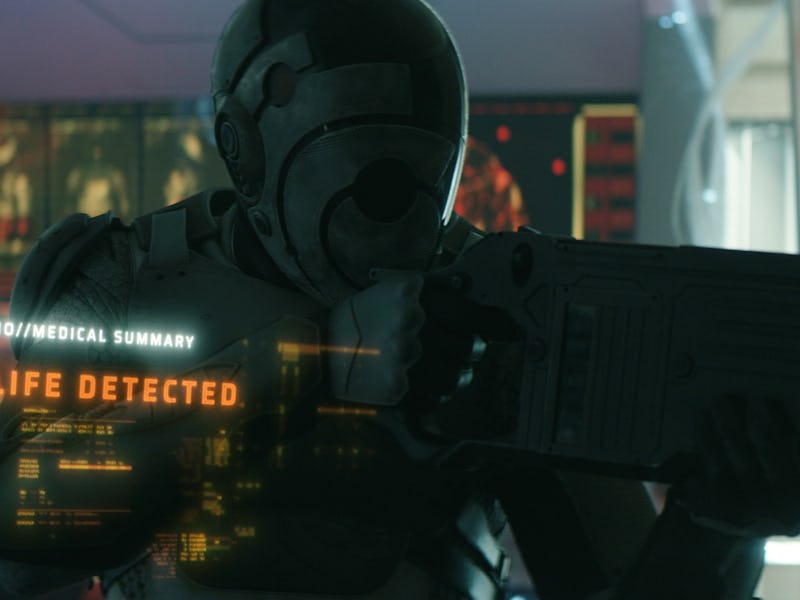Murderbot Just Flipped The Script On One Tired Robot Trope
Should robots all look the same?

In Murderbot, Alexander Skarsgård’s titular SecUnit isn’t a robot exactly. Instead, it’s a sentient construct which has some organic elements. But, as we see at the start of Episode 4, “Escape Velocity Protocol,” it’s very much made in a factory that looks like, well, a robot assembly line. The thing is, in the opening moments of this episode, Murderbot rejects one very old science fiction trope, and in doing so, adds yet another veneer of realism to this very funny and unique series. Paradoxically, the quirkier and stranger Murderbot gets, the more believable it seems, too.
Here’s why this very specific Murderbot plot point inverts a weird robot trope found in other sci-fi, and why it perfectly represents the ethos of the series.
Mild spoilers ahead.
Following an attack from some different rogue SecUnits, our hero, Murderbot, finds itself glitching, which naturally leads to some scenes from its favorite streaming series, Sanctuary Moon. But before that happens, we get an interesting flashback to a time before Murderbot came into existence. The episode opens on “Threshold Pass, Fabrication Center,” in the “Corporation Rim.” Here, we see the poor working conditions in which SecUnits are made, complete with disgruntled employees. Not only do we learn that most of these people are indentured workers, the way in which the tech is made is also full of poor quality control and frequent power outages.
In a voiceover, SecUnit jokes that this set-up is preferable to maternity wards in human hospitals, but the most interesting moment happens when one worker asks another why all the different SecUnits have different faces. The answer? “If one goes rogue or some sh*t, it’s easier to track it down.”
Murderbot is struggling to stay alive. But at least its the only Murderbot like it.
Other than Blade Runner, in which rogue Replicants did have specific and different faces, most big sci-fi franchises and stories take the opposite approach. In Battlestar Galactica, Terminator, and many, many others, the idea that you’d have different models that essentially all had the same face is extremely common. Even in the Star Trek franchise, there are multiple copies of androids that look like Brent Spiner. And in Picard, the idea that androids are created in sets is made into a very big deal. Westworld varies this a bit, but still focuses on Hosts that are often based on real people, and certainly is obsessed with duplication of Hosts in other ways.
In the Alien franchise, which features heartless corporations that mirror Murderbot a tiny bit — it makes sense that a corporation like Weyland-Yutani would make several versions of “David” or “Ash.” In Murderbot, the reason why this space corporation is evil has less to do with horrible schemes, but more connected to laziness and the desire to make things as cheaply as possible. Creating different faces for the SecUnits in Murderbot becomes less about the corporation trying to give each SecUnit a personality or a sense of self. Instead, it's a question of liability.
Smartly, this feels realistic and something that a robot-making corporation would do. But, the side effect is that it does give Murderbot a sense of humanity, whether it likes it or not. Like the Martha Wells books from which all of this comes, Murderbot is an interesting science fiction show, not because we’ve never seen a story about a synthetic lifeform struggling with its own humanity. It’s because the way in which Murderbot unpacks the realities of those struggles feels more focused on the experience of the synthetic lifeform itself. So often, humanoid robots in sci-fi exist in stories for us to think about how we would react to those lifeforms. In Murderbot, it's all about what an artificial lifeform would think about us.